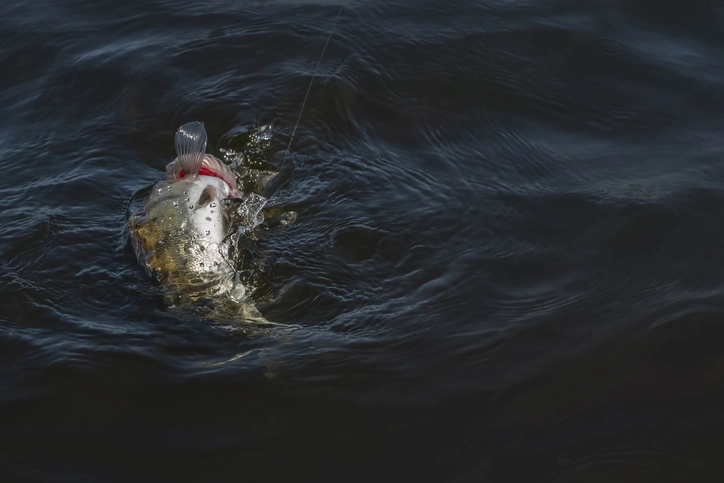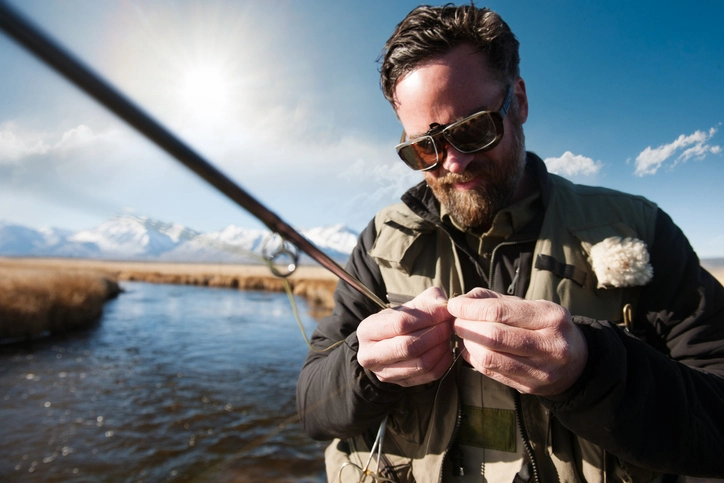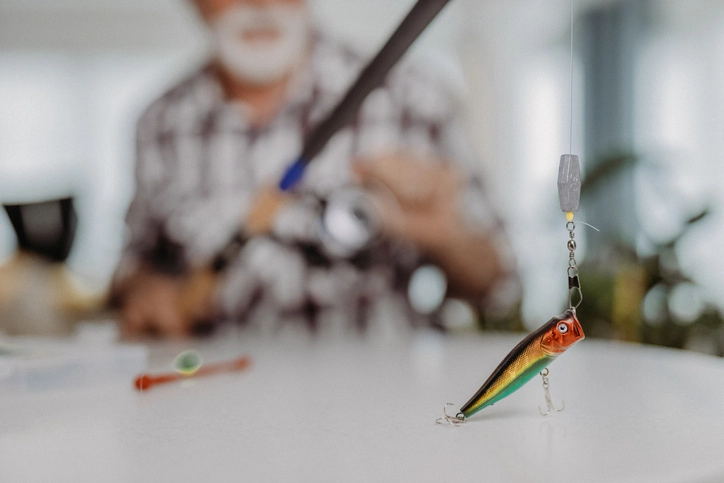Did you know that walleye fish populations have seen a decline of over 30% in the past decade? We must protect these incredible fish species for their long-term survival. I will share essential and best techniques for the safe catch and release of walleye fish. It allows us to contribute to conservation efforts and maintain healthy populations.
Essential Techniques for Safe Catch and Release of Walleye Fish
Safe catch and release techniques are crucial for walleye fishing. These methods ensure the survival of the walleye population and cut ecosystem impacts.
1. Fishing in Deep Water:
Walleyes prefer deep water. You will reduce the likelihood of catching non-target species.
2. Proper Handling of Fish:
Always wet your hands before handling the Walleye. This will cut the removal of their protective slime coating. This coating acts as a natural barrier against infections. Also, do not squeeze the fish , as this can cause internal injuries.
3. Minimizing Harm from Hooks:
Using barbless hooks can decrease the chances of injuring walleye during hook removal. If using barbed hooks, consider crimping down the barb. You can also use specialized tools to ease easy and safe hook removal.
Using these methods, we contribute to conserving walleye populations and securing their future.
4. Addressing Barotrauma:
Barotrauma can occur when fish reel up from deep water due to the rapid change in pressure. To prevent barotrauma, avoid overreaching walleye. Consider using tools such as descending devices to release fish back to their depths.
5. Mitigating the Impact of Invasive Species:
Invasive species pose a significant threat to the walleye population. Ensure that your gear and boats are always clean. They should inspect before moving to different bodies of water. This helps prevent the unintentional transfer of invasive species elsewhere.
Always remember to:
- – Know and follow local fishing regulations.
- – Use appropriate fishing tackle to reduce the risk of deep hooking.
- – Learn to detect and address the signs and symptoms of barotrauma in fish.
- – Educate fellow anglers about the importance of safe catch and release practices.
By applying these essential techniques, we can protect the walleye population. We contribute to the health and sustainability of our aquatic ecosystems.
Best Practices for Walleye Habitat Preservation
Preserving the habitat of walleye fish is crucial for their long-term conservation. Lakes, rivers, and reservoirs play a significant role as critical habitats for walleye. These bodies of water provide essential resources for these fish to thrive.
Anglers and conservationists unite to protect and restore habitats. Here are some practical tips:
- Practice responsible fishing techniques to cut disturbances to the habitat.
- Avoid fishing in sensitive areas and during spawning seasons. This allows walleye to reproduce and maintain healthy populations.
- Support habitat restoration projects and initiatives. Volunteer and donate to organizations dedicated to preserving aquatic ecosystems.
Natural resources agencies play a vital role in walleye fish conservation. The tool policies and regulations aim to preserve habitat and manage fish populations. These agencies also provide technical help to individuals. Also for communities interested in conservation efforts.
Protecting walleye habitat ensures their thriving. Preserving lakes, rivers, and reservoirs aids their long-term survival.
Whether it’s through responsible fishing practices, or supporting habitat restoration. Even partnering with natural resources agencies. We can all play a part in preserving walleye habitat for future generations to enjoy.
Conclusion
In conclusion, this guide offers insights into safe catch and release for walleye. Adopting these techniques aids conservation efforts for their future.
Collaborating preserves resources for future walleye fishing enjoyment and habitat protection. Walleye conservation is vital for a balanced ecosystem.
As anglers and conservationists, we must safeguard the walleye fishery. Practice sustainable fishing. Respect catch limits, use appropriate gear, and release undersized or excess fish. This ensures the long-term survival of this remarkable species. It also maintains the joy it brings to anglers nationwide.

FAQ
What are safe catch and release practices for walleye fish?
Safe catch and release practices for walleye fish involve techniques. Handle the fish . Cut its time out of water, and release it in a way that maximizes its chances of survival.
Why is it important to practice catch and release for walleye fish?
Practicing catch and release for walleye fish is crucial for maintaining healthy populations. Catch and release ensures walleye sustainability for future anglers..
How can I handle a walleye fish?
To handle a walleye fish, wet your hands before touching it to protect the fish’s slime layer. Hold the fish but by its lower jaw and support its body with your other hand. Avoid squeezing or dropping the fish, as it can cause internal injuries.
What actions should I take if I hook a walleye fish?
For hooked walleye, cutting the line near the hook is preferable to removal.. This minimizes the risk of causing further harm to the fish and improves its chances of survival.
What is barotrauma, and how can it impact walleye fish?
Barotrauma occurs when fish are rapidly brought up from deep water, causing injuries. It can cause their swim bladder to expand, hindering their ability to swim back down to the desired depth. Use descending devices to return fish to deeper water and cut barotrauma.
How can I contribute to the preservation of walleye habitat?
Support walleye habitat preservation by practicing responsible fishing and supporting conservation efforts.
Related Articles:
3. Support habitat restoration projects and initiatives
5. Barotrauma


